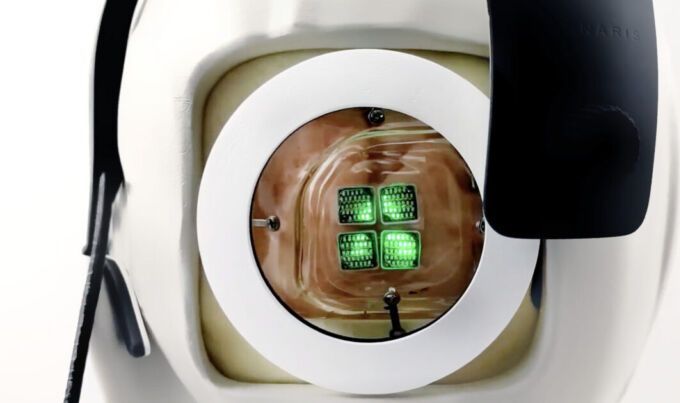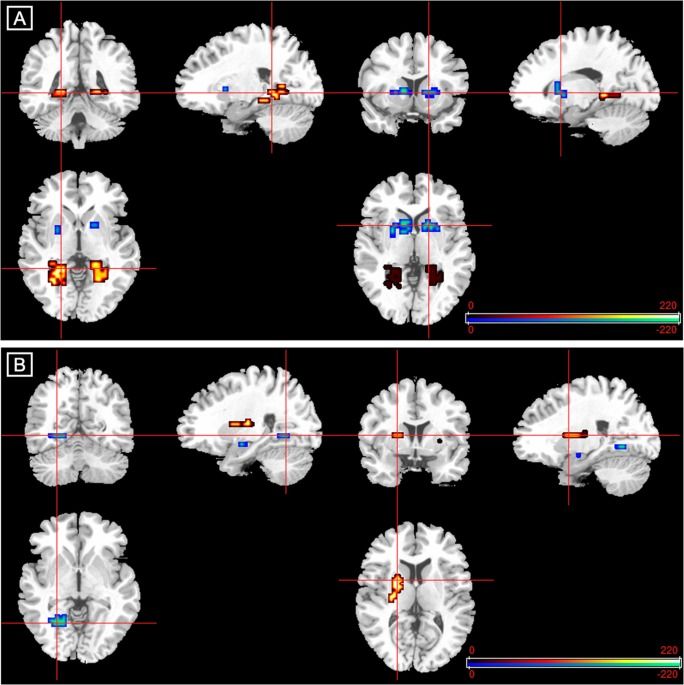The Sun has emerged from a solar minimum and a new cycle dubbed Solar Cycle 25 has begun. It will approach maximum solar activity in 5 years time, say NASA and NOAA scientists.



It’s essentially the guts of a smartphone combined with brain-implanted micro electrodes, as TechCrunch reports. The “Gennaris bionic vision system,” a project that’s more than ten years in the making, bypasses damaged optic nerves to allow signals to be transmitted from the retina to the vision center of the brain.
The system is made up of a custom-designed headgear, which includes a camera and a wireless transmitter. A processor unit takes care of data crunching, while a set of tiles implanted inside the brain deliver the signals.
“Our design creates a visual pattern from combinations of up to 172 spots of light (phosphenes) which provides information for the individual to navigate indoor and outdoor environments, and recognize the presence of people and objects around them,” Arthur Lowery, professor at Monash University’s Department of Electrical and Computer Systems Engineering, said in a statement.
Circa 2019
Monoclonal antibodies are man-made versions of immune system proteins (antibodies) that are designed to attach to a specific target (in this case, proteins on the surface of cancer cells). These drugs can help your immune system react to and destroy the cancer cells. Some monoclonal antibodies also fight cancer in other ways.
Chemo given along with a monoclonal antibody is a standard treatment for chronic lymphocytic leukemia (CLL).
The monoclonal antibodies used to treat CLL can be divided into groups based on which protein they target.



In recent years we have seen the move away from ‘politics as usual’. Non-traditional figures have entered the political arena to disrupt the typical entrenched narratives. The election and worldwide popularity of Jacinda Ardern, New Zealand Prime Minister just one example of a new kind of leader who prioritises national wellbeing and happiness in the belief that everything else will follow.
Brigadier General (Retired) Dr. Loree Sutton Next Mayor of New York City?
Brigadier General Dr. Loree Sutton, ex-army general, physician, LGBTQ, mental healthcare advocate, is a further example of a leader who attempts to bridge the gap between people and focus on wellbeing. She is a candidate who is bringing a centrist, holistic, “quality-of-life” based approach to rejuvenating and re-inventing one of the world’s major financial, technological, and cultural capitals, New York City. https://loreeformayor.nyc @NYC Mayor’s Office.
From brigadier general to new york city mayor?
Ira Pastor ideaXme life sciences ambassador interviews General Dr. Loree Sutton a retired military officer who served as a Brigadier General in the United States Army for over 20 years (one of only 15 female generals out of the 1.3 million soldiers serving in the Army) as well as a medical psychiatrist (for a period of time the Army’s highest-ranking), who was deployed to various locations including Saudi Arabia, Iraq, Kuwait, ad Egypt in support of the first Gulf War and other missions, and is a current candidate in the 2021 New York City mayoral election.
Ira comments: Over Dr. Sutton’s career she has been awarded Legion of Merit (a military award of the United States Armed Forces that is given for exceptionally meritorious conduct in the performance of outstanding services and achievements), as well as the Bronze Star Medal, Defense Meritorious Service Medal, and Order of Military Medical Merit. Dr. Sutton is also the founding director of the Defense Centers of Excellence for Psychological Health and Traumatic Brain Injury, and served as a special assistant to the Assistant Secretary of Defense for Health Affairs.


Darmstadt, 15 September 2020. – The European Space Agency (ESA) awarded a €129.4 million contract covering the design, manufacturing and testing of Hera, the space agency’s first mission for planetary defence, ESA announced today.
The contract was signed by Franco Ongaro, ESA Director of Technology, Engineering and Quality, and Marco Fuchs, CEO of Germany space company OHB, prime contractor of the Hera consortium, ESA said today. The signing took place at ESA’s European Space Operations Centre (ESOC) in Darmstadt, Germany, which will serve as mission control for the 2024-launched Hera.
The mission will be Europe’s contribution to an international asteroid deflection effort, set to perform sustained exploration of a double asteroid system, ESA said.
Hera will be, along with NASA’s Double Asteroid Redirect Test (DART) spacecraft, humankind’s first probe to rendezvous with a binary asteroid system, a little understood class making up around 15% of all known asteroids, the agency said.
Hera is the European contribution to an international planetary defence collaboration among European and US scientists called the Asteroid Impact & Deflection Assessment (AIDA).

Emotional dysregulation and anxiety are common in people at clinical high risk for psychosis (CHR) and are associated with altered neural responses to emotional stimuli in the striatum and medial temporal lobe. Using a randomised, double-blind, parallel-group design, 33 CHR patients were randomised to a single oral dose of CBD (600 mg) or placebo. Healthy controls (n = 19) were studied under identical conditions but did not receive any drug. Participants were scanned with functional magnetic resonance imaging (fMRI) during a fearful face-processing paradigm. Activation related to the CHR state and to the effects of CBD was examined using a region-of-interest approach. During fear processing, CHR participants receiving placebo (n = 15) showed greater activation than controls (n = 19) in the parahippocampal gyrus but less activation in the striatum. Within these regions, activation in the CHR group that received CBD (n = 15) was intermediate between that of the CHR placebo and control groups. These findings suggest that in CHR patients, CBD modulates brain function in regions implicated in psychosis risk and emotion processing. These findings are similar to those previously evident using a memory paradigm, suggesting that the effects of CBD on medial temporal and striatal function may be task independent.